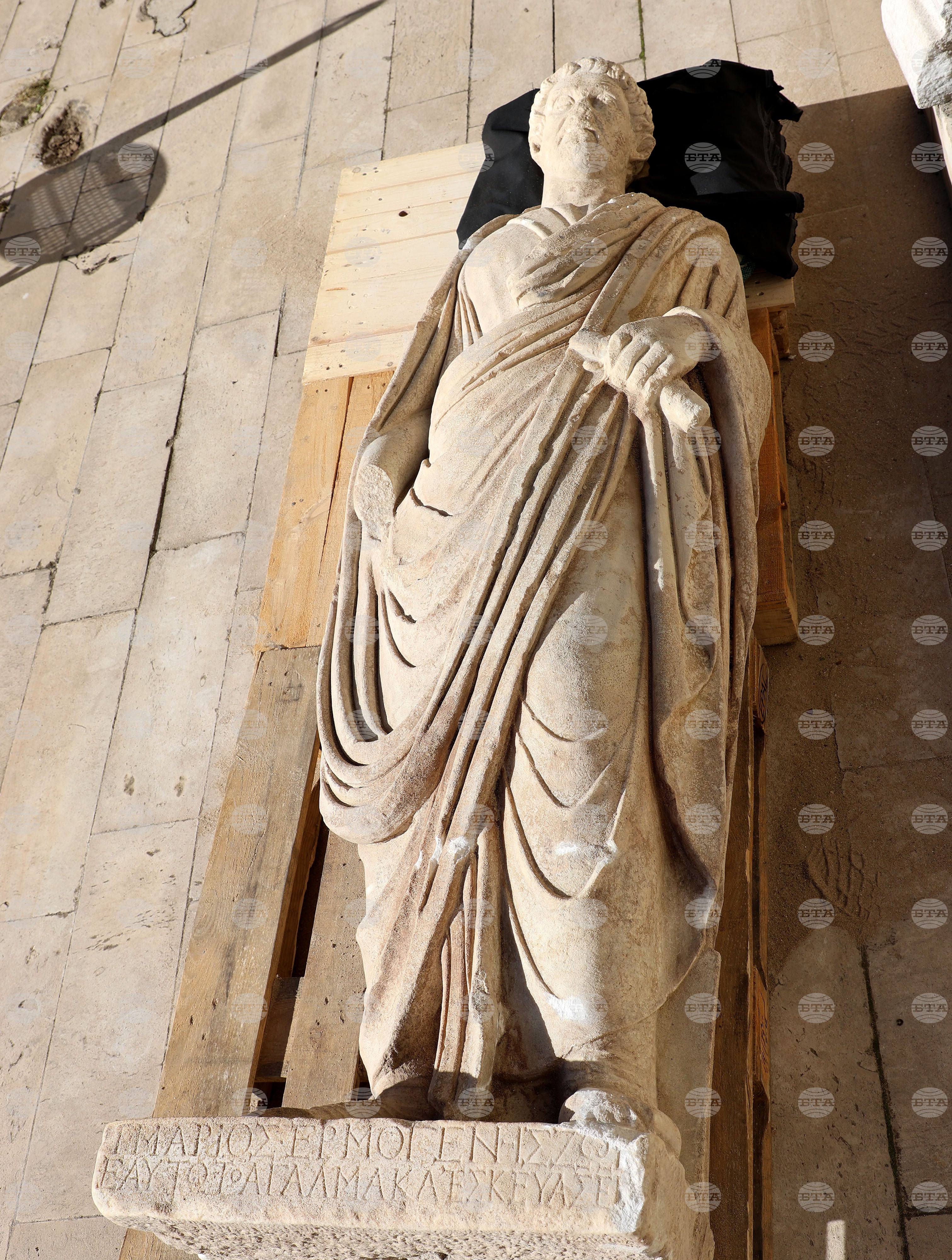Construction workers stumble upon ‘exceptionally preserved’ Roman statue near ancient city
The statue was found by construction workers in Bulgaria’s largest maritime city
Your support helps us to tell the story
From reproductive rights to climate change to Big Tech, The Independent is on the ground when the story is developing. Whether it's investigating the financials of Elon Musk's pro-Trump PAC or producing our latest documentary, 'The A Word', which shines a light on the American women fighting for reproductive rights, we know how important it is to parse out the facts from the messaging.
At such a critical moment in US history, we need reporters on the ground. Your donation allows us to keep sending journalists to speak to both sides of the story.
The Independent is trusted by Americans across the entire political spectrum. And unlike many other quality news outlets, we choose not to lock Americans out of our reporting and analysis with paywalls. We believe quality journalism should be available to everyone, paid for by those who can afford it.
Your support makes all the difference.Archaeologists in Bulgaria have identified an “exceptionally well-preserved” marble statue of a Roman man that was uncovered during construction in the city of Varna, once known as the ancient Greek city of Odessos.
Workers found the marble man outside the fortress walls of Odessos in an area filled with alluvium, which is a combination of sand, clay, silt, and gravel that’s left behind by streams. A small river used to flow in the area.
The statue, which Bulgarian news agency BTA reported was likely created in the late second or early third century AD, is of a citizen of Odessos, according to the Varna Regional Museum of History.
“The construction entrepreneur Georgi Kraychev informed [us] about it in a timely manner,” the museum wrote in a Facebook post, sharing additional photos of the statue.
The museum said the sculpture is slightly larger than human height, and made of fine white marble. The only damage to the “unique” Roman-era statue was to the middle-aged man’s right wrist and face.
Wearing a Roman toga and holding a scroll, the bearded man was also identified on the statue itself as Gaius Marios Ermogeniesz. The name was inscribed on the pedestal below his feet.
The museum said the man’s clothing indicated that Gaius was in good standing with the Romans.
Dr. Vasil Tenekedjiev, who works at the museum, told BTA that it’s possible enemies of the public figure may have taken his sculpture to that location.
Varna is Bulgaria’s biggest maritime city, according to the Free Speech International Foundation. It first began as a Greek colony in 570 BC.

The foundation said it was a major port in the Roman province of Moesia that prospered in the second and third centuries.
Roman Emperor Theodosius II signed an armistice with Attila the Hun in Odessos in 447.
But, in the seventh century, attacks from Avars and Slavs resulted in the abandoning of the city for several decades before it was renamed Varna.
“In the present-day Greek Neighbourhood, situated over the oldest core of the city, there are the ruins of a building which still impresses, 1,700 years after it was abandoned,” the foundation noted.

Join our commenting forum
Join thought-provoking conversations, follow other Independent readers and see their replies
Comments